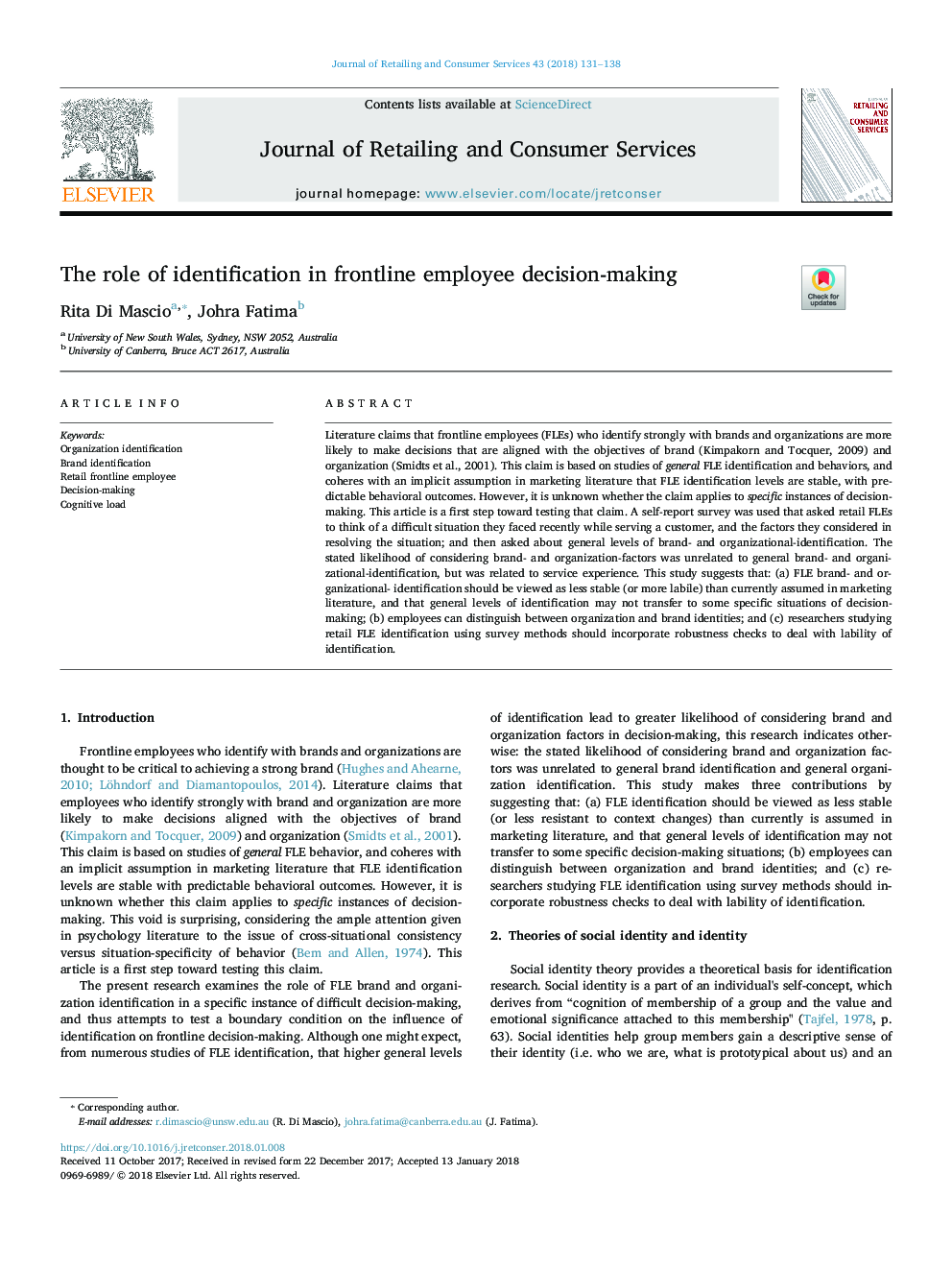| Article ID | Journal | Published Year | Pages | File Type |
|---|---|---|---|---|
| 7433444 | Journal of Retailing and Consumer Services | 2018 | 8 Pages |
Abstract
Literature claims that frontline employees (FLEs) who identify strongly with brands and organizations are more likely to make decisions that are aligned with the objectives of brand (Kimpakorn and Tocquer, 2009) and organization (Smidts et al., 2001). This claim is based on studies of general FLE identification and behaviors, and coheres with an implicit assumption in marketing literature that FLE identification levels are stable, with predictable behavioral outcomes. However, it is unknown whether the claim applies to specific instances of decision-making. This article is a first step toward testing that claim. A self-report survey was used that asked retail FLEs to think of a difficult situation they faced recently while serving a customer, and the factors they considered in resolving the situation; and then asked about general levels of brand- and organizational-identification. The stated likelihood of considering brand- and organization-factors was unrelated to general brand- and organizational-identification, but was related to service experience. This study suggests that: (a) FLE brand- and organizational- identification should be viewed as less stable (or more labile) than currently assumed in marketing literature, and that general levels of identification may not transfer to some specific situations of decision-making; (b) employees can distinguish between organization and brand identities; and (c) researchers studying retail FLE identification using survey methods should incorporate robustness checks to deal with lability of identification.
Related Topics
Social Sciences and Humanities
Business, Management and Accounting
Marketing
Authors
Rita Di Mascio, Johra Fatima,
